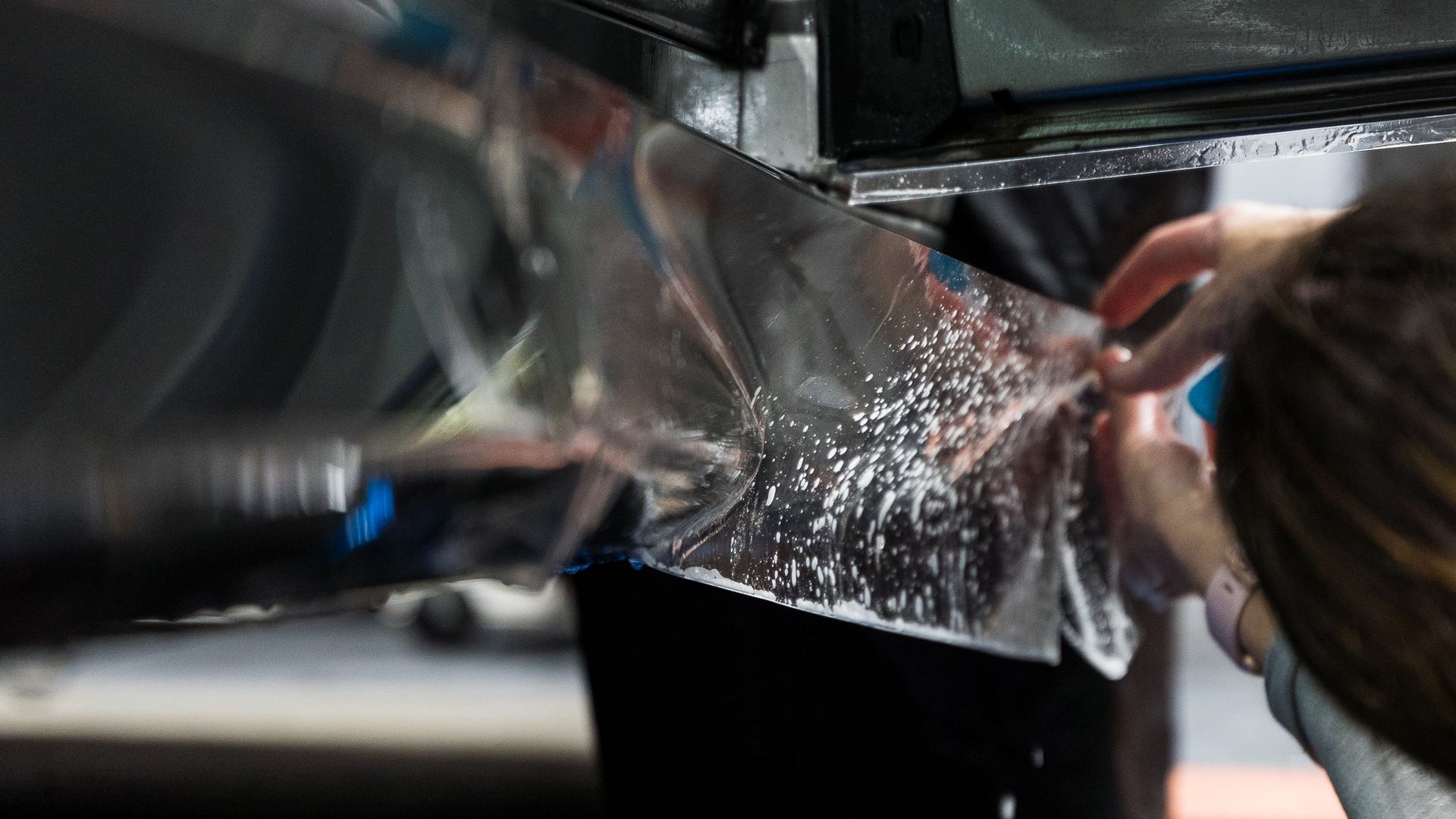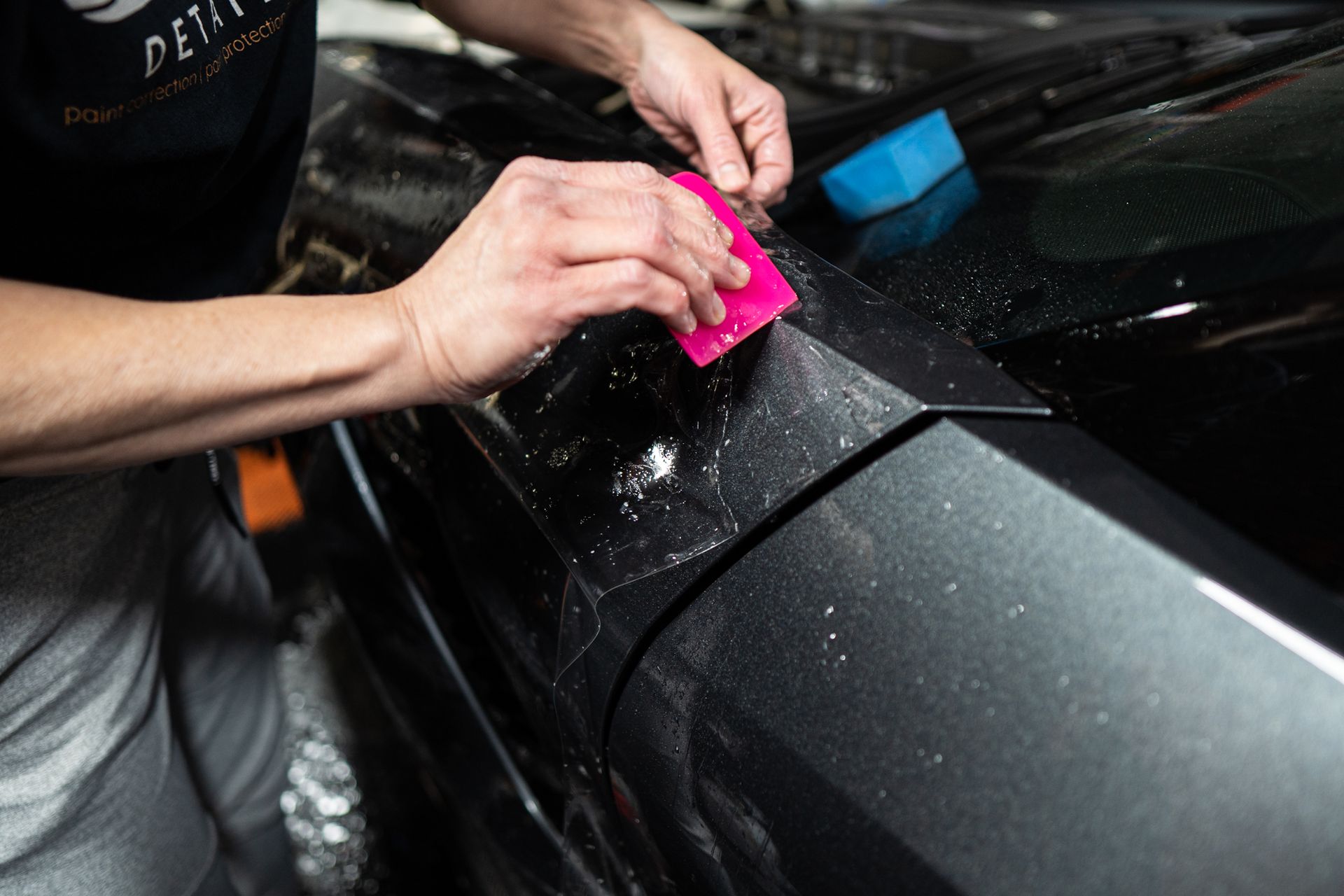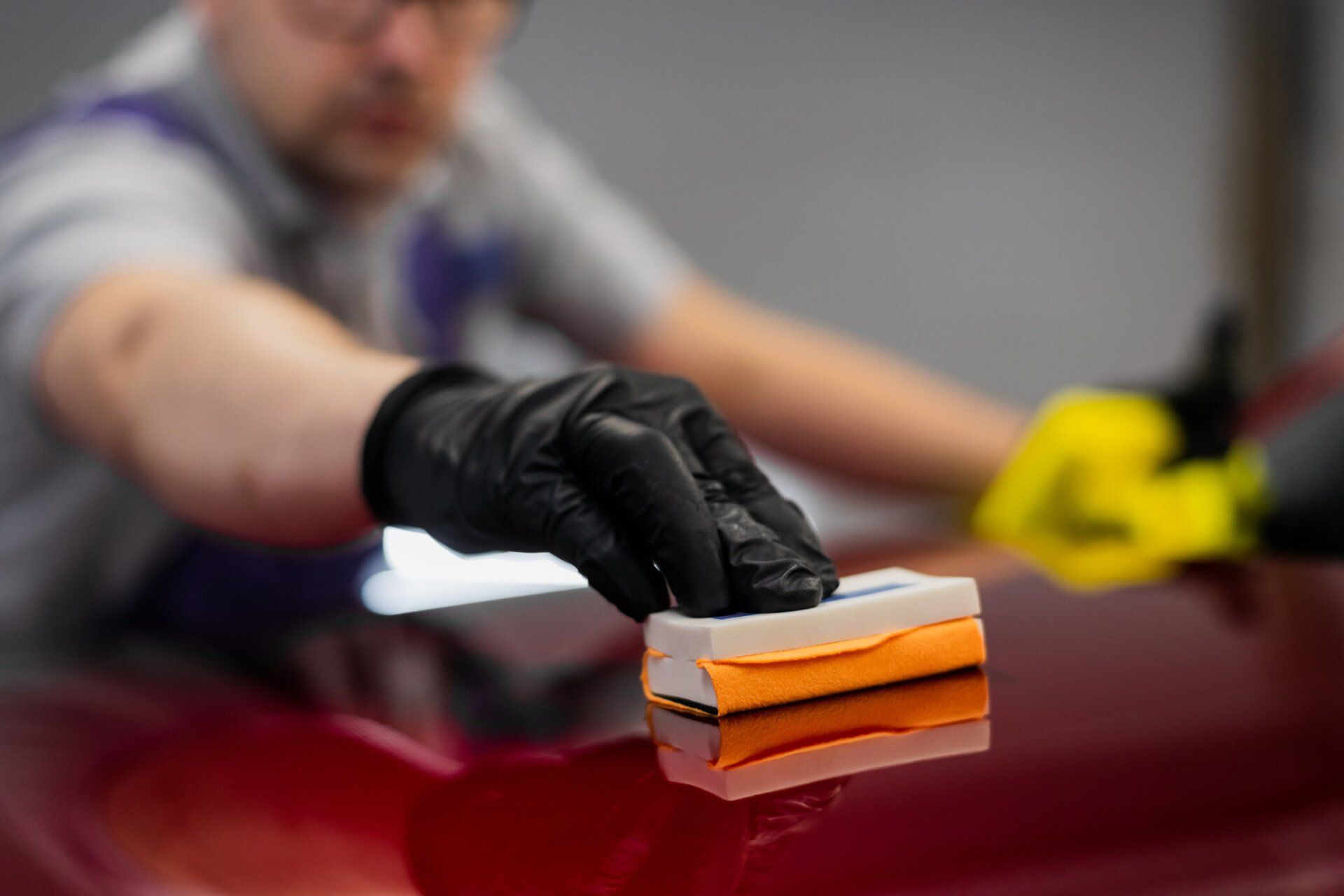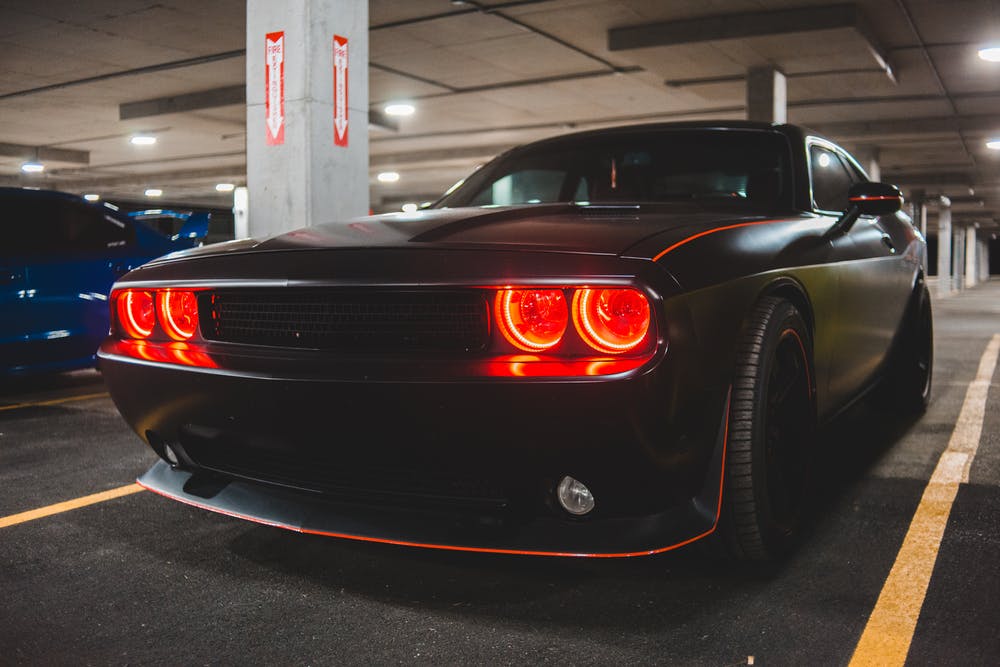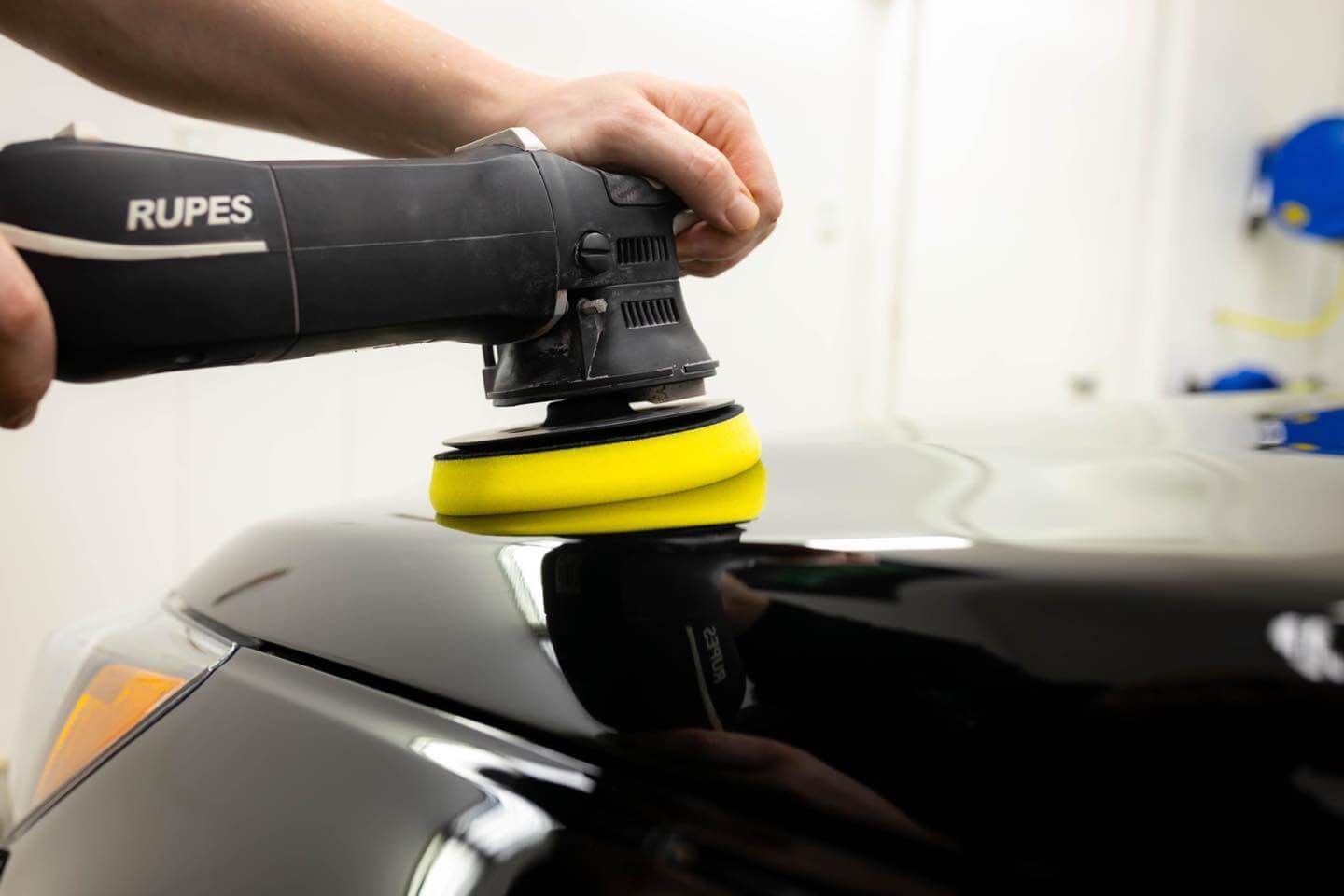The Lifespan of Paint Protection Film for Vehicles: When to Replace and How to Maintain
BOOK NOWPaint protection film is not a forever thing; its life can get shorter due to many things. The sun, dirt, hitting rocks—all these hurt it over time. There are signs telling it's time for a new one, with discoloration or a yellow cast being the most clear. If correct care is taken, like washing with gentle soap and keeping the car under shade, film life can be longer. Now think, your car has some yellowish shade; what will you do?
It is recommended to consider replacing your paint protection film if you notice significant yellowing, bubbling, peeling, or any damage that compromises its protective qualities. Additionally, if the PPF has reached the end of its expected lifespan, typically around 5–10 years, depending on factors such as quality installation and environmental conditions, it may be time for replacement. Regular inspections by an expert paint protection film specialist can help determine the right timing for replacement.
Common Signs It's Time to Replace Your Paint Protection Film
Paint protection film is crafted to safeguard your vehicle's paint, but over time, it can exhibit signs of wear and tear. Discoloration or yellowing, is a clear indication that the film has aged and reached the end of its effective lifespan. Much like an aging photograph left in direct sunlight, PPF can also develop a yellowish hue due to prolonged exposure to UV light. This discoloration not only affects the appearance of the film but also signals a loss of protective qualities, leaving your car's paint vulnerable. Similarly, bubbling or peeling edges are a red flag, indicating that the film is no longer adhering effectively to the vehicle's surface. Just as a bandage loses its adhesive over time, PPF may start to bubble or peel due to improper installation or prolonged exposure to harsh environmental elements. If left unaddressed, these compromised areas may allow debris and moisture to seep underneath the film, potentially causing damage to the underlying paint.
Moreover, deep scratches and cracking on the PPF are not just cosmetic blemishes; they compromise the film’s protective function. These imperfections can occur due to regular wear and tear, impacts from road debris, or even improper maintenance. When you notice deep scratches or cracks, it’s vital to consider replacing the film promptly to ensure continued protection for your vehicle’s paint. Remember, timely replacement of damaged paint protection film prolongs the life of your vehicle's paintwork and safeguards against potential costly repairs down the line. It's important to keep an eye out for these signs, as they indicate when your paint protection film needs replacing. Being proactive in identifying these signs will help you maintain a high level of protection for your vehicle's paint and prevent any long-term damage.
Impact of UV Light Exposure on Film Lifespan
Think of your car's paint protection film as a brave knight defending your car's paint against harm. Over time, even the most valiant warriors face wear and tear from prolonged battles. Similarly, extended exposure to UV light is like an unyielding adversary for PPF. The ultraviolet (UV) rays in sunlight can be quite formidable, gradually weakening the film's adhesive and causing it to lose its protective prowess. Prolonged exposure to UV radiation can lead to adverse effects on PPF. High levels of UV radiation have been found to cause a decrease in the lifespan of paint protection film. Extended sun exposure can cause the film to exhibit signs such as peeling, yellowing, and loss of adhesion, which can compromise its protective function.
So what is the best way to defend your car's "knight" from these harmful sun rays? Parking your vehicle in shaded areas whenever possible or using car covers when not in use can shield the paint protection film from excessive UV exposure. By minimizing UV exposure, you are effectively reinforcing the fortitude and extending the lifespan of your paint protection film. Understanding the consequences of extended UV light exposure emphasizes the importance of taking proactive measures to shield your PPF from this formidable foe. By leveraging these strategies, you can safeguard your paint protection film and prolong its effectiveness in preserving your car's pristine appearance.
Evaluating Paintwork Under the Film
When protecting your vehicle's paint, the paint protection film stands as a vital defender against scratches and environmental damage. But what happens when it's time to replace it? Before you rush into applying new film, it's crucial to assess the state of the paintwork underneath, identifying any possible damage, discoloration, or imperfections that need attention before reapplying the protective film.
To begin, carefully inspect the entire surface area of the paintwork under the PPF. Look for signs of wear, such as yellowing, bubbling, peeling, scratches, or discoloration, indicating potential issues needing repair. For instance, yellowing could be due to prolonged UV exposure causing the paint protection film adhesive to break down and oxidize. This yellowing could transfer to the paintwork over time, affecting its appearance. Additionally, pay close attention to the edges of the PPF where it meets the vehicle's surface. Any lifting or cracking at these edges can allow contaminants and moisture to seep beneath the film, potentially causing damage to the underlying paint.
Consider how long the current PPF has been in place. If it has been several years since installation, there may be a visible difference in gloss and color retention between areas protected by film and those left exposed. Seek assistance from a professional with expertise in paint protection film maintenance and removal for a comprehensive evaluation. These specialists can conduct an in-depth examination to identify any underlying issues that might go unnoticed. By carefully evaluating the condition of the paintwork beneath the PPF, you can address existing issues and provide optimal care before applying a new layer of protection. This proactive approach ensures that your vehicle's paint stays immaculate for years to come.
Steps to Effectively Replace Paint Protection Film
As you consider replacing your paint protection film, it's essential to approach the process methodically. This ensures the protection of the underlying paint and flawless adherence of the new film. Here are three key steps to guide you through the process:
Step 1: Removing the Old Film
When it's time to replace your old paint protection film, delicacy is paramount. Carefully peel off the old film to avoid damaging the underlying paint. If any residue remains, it must be cleaned off without leaving behind any marks or damage to the paint. Some helpful tools for this step include a heat gun or steamer, which can loosen the adhesive and make it easier to remove the film without leaving any sticky residue behind. It's crucial to take your time and apply even pressure during the removal process, ensuring that the paint underneath remains unharmed.
Step 2: Surface Preparation
Once the old film is removed, it's time to thoroughly clean and prepare the vehicle's surface for the new film application. Any remaining adhesive residue must be completely removed, and the area should be free of dust, dirt, and any other contaminants that could affect adhesion. This step involves using gentle cleaning agents and material-safe solvents to ensure that the surface is impeccably clean and ready for the new protection film. A clean surface is crucial for proper adhesion of the new film and ensures a seamless application.
Step 3: Precise Application
The final step involves applying the new paint protection film with meticulous care. It's important to ensure that the film conforms perfectly to the unique contours and curves of your vehicle. This process demands precision and attention to detail to provide comprehensive coverage and protection for your vehicle's paint. Professional installation is often recommended for this step, as experts have experience working with various vehicle models and can guarantee a flawless application. Using high-quality professional installation services, such as those offered by Five Star Automotive Detailing, can make all the difference in how well the new film adheres to your vehicle's surface.
By following these carefully outlined steps, you can ensure a smooth and effective replacement process for your paint protection film, extending the lifespan of your vehicle's paint and preserving its pristine appearance.
Cost Implications of Paint Protection Film Replacement
When it comes to replacing your paint protection film, it's crucial to understand that the cost can vary greatly depending on a few key factors. The first and most obvious factor is the size of the vehicle. Larger vehicles, like SUVs and trucks, will naturally require more material and labor, leading to a higher cost compared to smaller cars. This is something to keep in mind as you plan for the replacement of the PPF on your vehicle. Additionally, the quality of the film is another significant determinant of cost. High-quality clear bras tend to be more expensive upfront but offer superior protection and longevity. It's important to consider this as an investment in the long-term preservation of your vehicle's exterior. Lower-quality films may be more affordable initially but may not provide the same level of protection, potentially leading to more frequent replacements and higher overall costs.
Finally, professional installation plays a crucial role in the overall cost of PPF replacement. While some car owners may choose DIY kits to save money, professional installation guarantees proper application, maximizing the protective benefits of the film. Always keep in mind that inaccurate installation can lead to air bubbles, peeling, or misalignment—issues that may necessitate premature replacement. It's worth noting that these factors collectively contribute to a wide cost spectrum for paint protection film replacement. Based on these considerations, costs can range from several hundred dollars for small vehicles with basic coverage to several thousand dollars for large vehicles with comprehensive protection.
Understanding these cost implications provides valuable insight into budgeting for the replacement of your paint protection film. By carefully considering the size of your vehicle, the quality of the film, and opting for professional installation, you can make informed decisions that align with your preferences and budget while ensuring optimal protection for your vehicle's paintwork. These critical factors underscore the complexity involved in maintaining a vehicle's exterior protective layers.
Benefits and Maintenance of Freshly Replaced PPF
So, you've just invested in a shiny new paint protection film for your vehicle. Congratulations! Your car is now shielded from road debris, scratches, and other external elements. With this fresh layer of protection, your car has a renewed sparkle; the glossy finish gleams like new. But it's not just about looks. This new PPF layer offers reliable safeguarding against the wear and tear that daily driving can inflict on your vehicle's exterior. Think of it as armor for your car's paint, fending off potential damage to keep your car looking sharp for years to come.
Additionally, it's important to emphasize that aesthetic appeal isn't the only thing that gets a boost from a newly replaced paint protection film. The structural integrity and resale value of your vehicle also see an increase with the investment in PPF replacement. This means that if or when you decide to sell or trade-in your car, the presence of a recently replaced clear bra could significantly enhance its value, often covering the cost invested in the replacement.
Now, let's talk about how to maintain this recently replaced layer of protection. Start off by cleaning your PPF regularly with pH-neutral solutions. This will help protect your film from harsh chemicals that can lead to premature wear and tear, ensuring longer-lasting protection for your vehicle's shimmering exterior. Maintaining a freshly replaced PPF is akin to preserving the sheen of a brand-new car from day one. Proper care and attention will go a long way in extending the lifespan of the film and keeping your vehicle looking showroom-fresh.
In addition to regular cleanings, manage UV exposure meticulously - parking under shade or using car covers can greatly minimize UV-related degradation. Periodic inspections for signs of wear and tear are also crucial in catching any issues early on before they escalate, ensuring the longevity of your freshly replaced PPF. By understanding the advantages of investing in a freshly replaced PPF layer and following these maintenance practices, you'll ensure that your vehicle remains shielded from damage while maintaining its aesthetic allure for an extended period of time.
Premium Paint Protection Film Experts in Rochester, MN
Shield your vehicle with the superior protection offered by Five Star Automotive Detailing, the premium paint protection film experts in Rochester, MN. Our highly trained team specializes in applying top-quality paint protection film that guards against scratches, chips, and environmental damage, ensuring your car remains in pristine condition. With meticulous attention to detail and cutting-edge techniques, we deliver flawless results that enhance your vehicle’s longevity and appearance. Trust Five Star Automotive Detailing to provide the ultimate defense for your investment. Schedule your appointment today and experience the unmatched protection our paint protection film offers. Call us today at (937) 361-7993 to get started!



